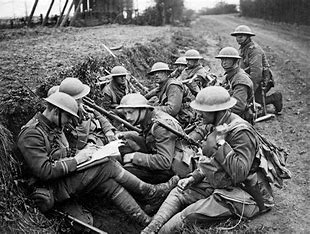World War 1: Causes, Timeline, and Conclusion

World wars are wars fought by countries involving most of the world's most powerful nations. Unlike other wars, world wars involve almost all countries and affect all people directly or indirectly.
In this article, we will know about World War I in details. We will also cover the reason and consequences of World War I.
World War I
The First World War (abbreviated as WWI or WW1) was a global war in Europe that lasted from 28 July 1914 to 11 November 1918. Apart from Germany, the Axis powers included countries like Austria, Hungary and Italy. Germany was leading the Axis powers.
The Cause of World War I
The assassination of Austrian Archduke Franz Ferdinand on 28 June 1914 set off a chain of events that resulted in the outbreak of war in early August 1914.
What were the causes and consequences of the First World War?
The world map changed after the First World War, with the disintegration of empires and the emergence of new nations like Poland, Czechoslovakia, Yugoslavia. The borders of Austria, Germany, France and Russia changed. The Baltic kingdoms became independent from the Russian Empire.
Who were the friendly countries in the First World War?
Rival Alliances In World War I, the Entente powers led by France, Russia, the British Empire, and later Italy (from 1915) and the United States (from 1917) defeated the Central Powers, led by the German, Austro-Hungarian, Bulgarian, and Ottoman Empires. Defeated.
Who won the first world war?
In 1918, Britain, France and America defeated countries like Germany. The war ended on 11 November 1918 on the request of Germany and Austria.
What impact did the First World War have on India?
As a result, a feeling of dissatisfaction arose among the Indians towards the British rule, this led to the rise of national consciousness and soon the non-cooperation movement started. After this war, with the formation of USSR, communism also spread in India (formation of CPI) and as a result socialist influence was seen on the freedom struggle.
How many countries participated in the First World War?
Which countries fought in World War I? In this war, the Central Powers (primarily Germany, Austria-Hungary, and Turkey) faced the Allies (primarily France, Great Britain, Russia, Italy, Japan, and, since 1917, the United States).
What impact did the First World War have on the economy?
A major impact of World War I was the economic crisis into which the countries involved were plunged. After the war, the destruction in Europe was immense and it took time for countries to recover. Germany lost its industrial power and had to go into debt to pay the costs of the war. There was a sharp increase in the prices of daily use items. The war increased the demand for industrial goods like jute bags, clothes, railways and steel. After the war ended in November 1918, the global economy began to decline. Between 1916 and 1921, the American economy experienced two recessions. The United States emerged as the new leading economic power.
How did World War 1 affect the economy of Germany?
In the years following World War I, there was hyperinflation of the German currency (Reichsmark) until 1923. Reasons for this included the massive reparations imposed after World War I and the general inflationary period in Europe in the 1920s (another direct consequence of the materially devastating war).
Who benefited from World War 1?
America benefited the most from the First World War. America joined the war late, so it did not lose large numbers of people like other countries. He was also in a position to decide whether to join the war, rather than having it forced upon him.
America benefited from capturing the markets of warring countries and maintaining the domestic market after the war. During the war, the American economy boomed due to one-sided war trade with European powers. Raw and finished goods including cotton, wheat, brass, rubber, automobiles, machinery were exported to the Allies.
You may also like:
Top 10 most visited websites in the World: Google, YouTube, Facebook And
Google, Facebook and Meta are some of the giant tech companies in the world. One of the factors that make ...
History of India: Ancient Civilizations to Modern Times
India is a great country whose history is so rich that you will find it hidden in every corner. By studying history, ...
The Story of Hong Kong: A Historical Overview
Hong Kong is a special administrative region (SAR) of China. Hong Kong is officially a special administrat...
World War II: A Look Back at the Devastating Conflict
World War II was the largest and deadliest war in history, in which more than 30 countries were involved in whi...
© 2025 InforMantra. Contact Us | About Us | Privacy | Disclaimer | Search
